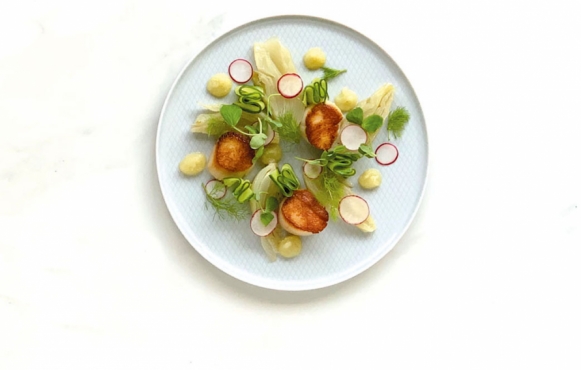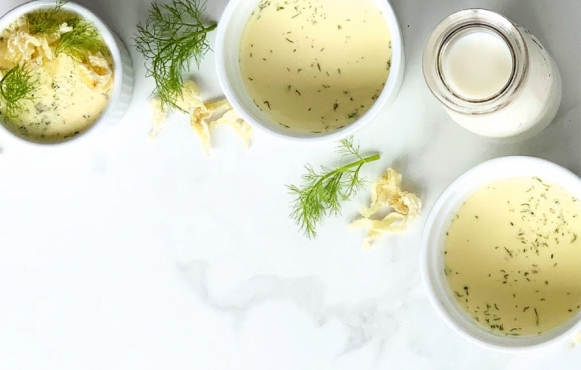Fennel Recipes

Fennel can be a take it or leave it type of vegetable. It has the mild flavour of anise, that reminds people of black licorice. While it's not everyone's cup of tea (even though fennel makes a nice cup), for those who do enjoy fennel, it is a crunchy, versatile vegetable that pairs well with so many other ingredients.
Fennel grows well, cultivated and wild, throughout many regions of the world where it can find a temperate climate and well-drained soil close to water. Fennel has its origins, as well as a long, storied history, along the Mediterranean, especially in Greece. According to mythology, the titan, Prometheus used a long stalk of fennel to bring fire to Earth from Mount Olympus. And in Ancient Greece fennel was named for the city of Marathon after the Greeks defeated a Persian attack in the fennel fields surrounding the infamous city.
A member of the carrot family, with cousins such as coriander, cumin, dill, celery and parsley, growing fennel in your garden should not become a family reunion. Fennel has no friends for companion planting and should be given its own space — not even at the kid's table. If you do decide to plant fennel, start it early (it grows easily from seed indoors) and get it into the ground as soon as you can. It doesn’t mind a little chilly weather, but it does take a few months to grow a decent-sized bulb.
And when it comes to eating fennel, everything goes. Like celery, it’s easy to find uses for the entire vegetable. The white “leafed” bulb is the meat of the plant. It's great for eating raw or cooked in many different styles of cuisine and pairs well with various ingredients. It’s funny that fennel doesn’t grow well with other plants, because it plays so nicely with others in the kitchen. The pale green, hollow stems can be chopped and mixed with the bulb in recipes or used in place of celery for soups or stocks — especially fish stock. The wispy leaves or fronds of the plant can be used like an herb. They are delicate, tasty and great for finishing dishes or as garnishes. When the plant goes to flower, the tiny delicate flowers are used as fennel pollen, all the rage with chefs and high-end restaurants. If the flowers are allowed to be pollinated, the fruit they produce is harvested and sold as fennel “seed.” This fruit or seed is full of anise flavour and is used widely in providing the licorice flavouring in many products.
Fennel has long been used in more than just culinary applications. Eaten raw or steeped in a tea, fennel makes a great digestive aid, helps counter flatulence and works as a breath freshener. It is high in fibre to help regulate high blood pressure and to lower cholesterol. It is high in vitamins C and B and full of iron, calcium, manganese and magnesium (especially in the seeds) — helping to reduce bloating, stress and more.
You can argue about whether fennel is one of the healthiest vegetables out there, but like it or leave it, it is one of the most versatile and celebrated foods we have cultivated. The recipes we have created show it off as it should be — simple and delicious.







